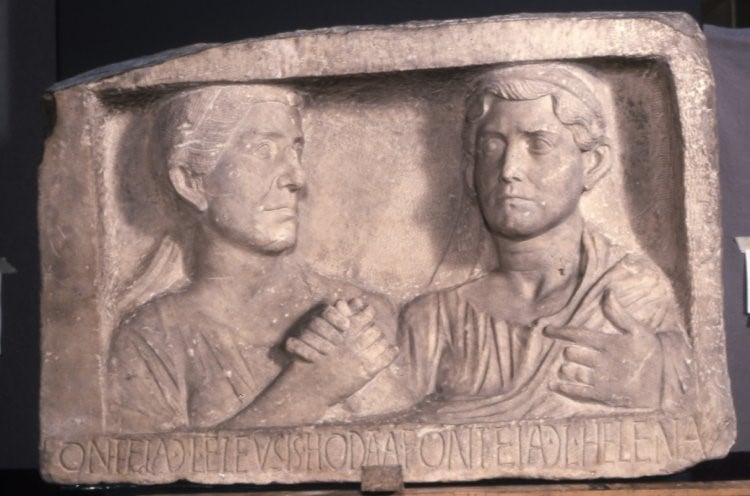I’m Casey Hoke, a Point Foundation Scholar and a loud, proud, self-proclaimed Queer Art Historian. I’m a 3rd year at Cal Poly Pomona and study graphic design and minor in art history. To a lot of folks I’m sure that my minor sounds like a bore. It’s a lot of notes, listening to lectures, and sometimes debating things that artists did 400 years ago that really won’t make too much impact on the days ahead. Yet, I feel that art history has taught me so much more than a textbook and has affirmed my queerness as something that certainly isn’t a phase and has been something normal to express through art. And the truth is, a lot of these queer things about art history have been glazed over (literally and figuratively) and have been argued over as “straight” and “cisgender” content.
To help make this art more visible and accessible, here’s five queer things I’ve found in my research for my Point Foundation Community Service Project that you may not know! Of course, you can find much more than these five pieces at queerarthistory.com, a growing educational database of Queer Art that I’ve created!
1. Imagery of Roman women in love was mutilated to make them look like a straight couple.
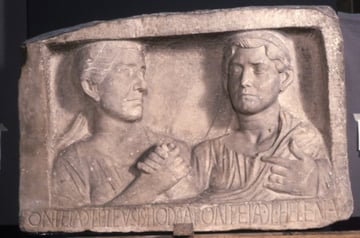
This funerary relief sculpture was a commemoration of freedwomen Fonteia Helena and Fonteia Eleusis in Rome around 21 BCE. The poses of the figures’ hands together (while it looks like a “rock n’ roll” hand-gesture) signifies an important relationship in life. It is argued that the two women were lovers or even “married” due to their position as one that was only given to heterosexual married couples in similar reliefs. The sculpture was modified a few centuries later by an unknown person in attempt to modify the left figure’s appearance to appear as a male figure by cutting off her hair.
2. The “Marquesan Man” in Gauguin’s Marquesan Man in the Red Cape (or Sorcerer of Hiva Oa) (1902) is a non-binary Mahu individual
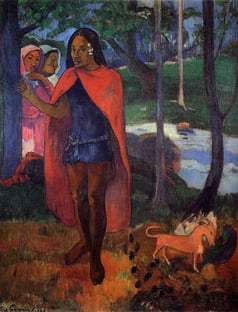
This painting’s inspiration was drawn from Gauguin’s travels from France to the Polynesian Islands where Gauguin thought the lives and surroundings would be “untouched” by European influence and colonization. This painting depicts a māhū individual from Hiva Oa (not a man in a cape, as Gauguin describes the individual to his western standards of gender) who identifies with a third gender that can encompass both male and female roles, presentation, and even some spiritual aspects as māhū individuals were revered as healers as this person that Gauguin describes as a “sorcerer”.
3. Frida Kahlo painted for Dolores Del Rio, a Mexican actress of the 1920s-30s
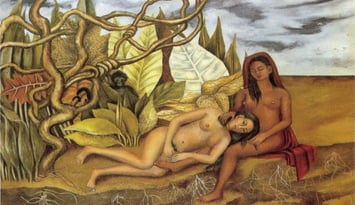
Kahlo’s piece titled Two Nudes in the Forest or The Earth Itself, was painted in 1939 for one of her lovers, Dolores Del Rio, a Mexican actress of the 1920’s and 30’s. The painting’s aim has a few theories as to its symbolism. The two women may symbolize feminine sexuality or Frida's dual identities comforting one another as European, as signified by the figure with light skin, and Mestiza. The painting also contains a monkey, a common symbol in Frida's paintings and life as she owned several spider monkeys. Monkeys, however, are also common symbols for sin and sexual promiscuity.
4. The first upright statue in a city plaza was one depicting gay warrior-lovers
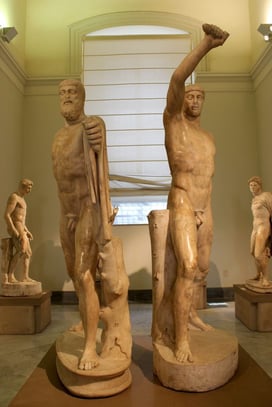
The warrior lovers Harmodius (right) and Aristogeiton (left) rescued the ideals of democracy from a dictator and were heroes to Athens in 514 BCE. Thus, the statues of the warriors were commissioned to be displayed in the public forum. This was the first statue to honor mortal heroes instead of divine heroes in public. Note that Aristogeiton, the older warrior (left) lunges forward and offers a protective cloak for Harmodius. This may symbolize the warrior’s mutual devotion and love to one another.
5. A queer black woman created the first solo portrait of First Lady Michelle Obama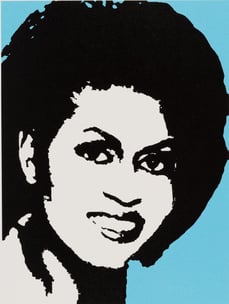
Michelle Obama’s first solo portrait was created by Mickalene Thomas, a queer artist who frequently depicts black women in prints and paintings with added embellishments to discuss power, sexuality, and beauty, among other topics. Thomas uses techniques and styles derived from modern western art to reclaim blackness in narrative imagery. Drawing from gay artist Andy Warhol (1928-87) and his screen-print portrait of Jackie Kennedy, titled Jackie O, Thomas printed Obama’s image titled Michelle O in 2008 and donated her portrait to the Obama campaign.
(To see more pieces like this, visit queerarthistory.com, a database of Queer Art created by Casey for his Point Foundation Community Service Project.)

This post was written by Wells Fargo Point Scholar Casey Hoke.
Casey currently studies Graphic Design at California State Polytechnic University, Pomona. Casey combines his passions for art and the study of LGBTQ identity through speaking events and contributing to media. Casey plans to take his innovations and activism further to help others tackle marginalization with creative solutions. Read more about Casey here.
